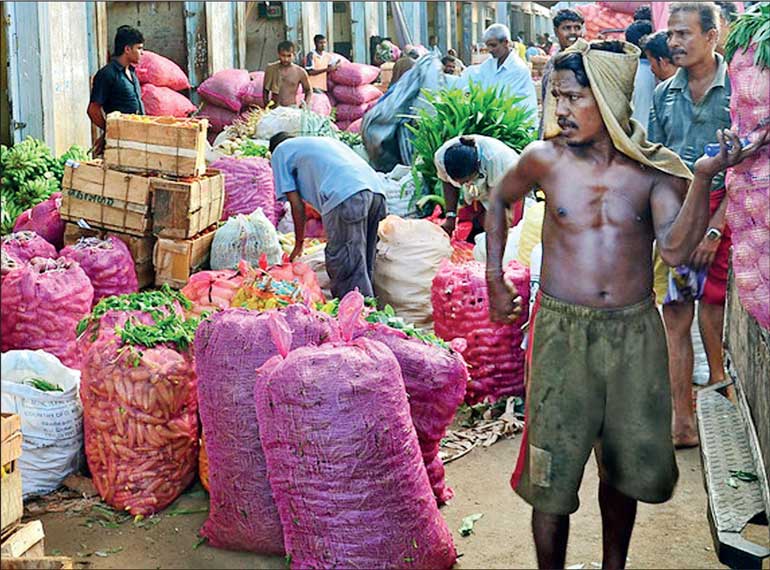Tuesday Dec 16, 2025
Tuesday Dec 16, 2025
Wednesday, 8 October 2025 00:30 - - {{hitsCtrl.values.hits}}

Debt sustainability remains the cornerstone of economic recovery
 Sri Lanka enters the period of 2025-2030 at a critical juncture, having emerged from its severe economic crisis in the recent past. Sri Lanka’s economic landscape once in the brink of collapse in the aftermath of the 2022 crisis has demonstrated a remarkable turnaround, yet the path to sustained growth is weighted with significant challenges. Though the country achieved a swift rebound through decisive policy measures, a strategic roadmap with deep structural transformation is imperative to establish a resilient economy without derailing the current momentum.
Sri Lanka enters the period of 2025-2030 at a critical juncture, having emerged from its severe economic crisis in the recent past. Sri Lanka’s economic landscape once in the brink of collapse in the aftermath of the 2022 crisis has demonstrated a remarkable turnaround, yet the path to sustained growth is weighted with significant challenges. Though the country achieved a swift rebound through decisive policy measures, a strategic roadmap with deep structural transformation is imperative to establish a resilient economy without derailing the current momentum.
A report was presented by a group of professionals on the central theme ‘Sustaining Transformative Growth in 2025-2030’ with the objective of ensuring the continuity of transformative growth in the next half decade. This article is based on the presentations of the contributing professionals namely, Prof. Sirimal Abeyratne – Executive Director of the Centre of Poverty Analysis, Dr. Ganeshan Wignaraja – fellow ODI Global and Yvette Fernando – former Senior Deputy Governor of the Central Bank of Sri Lanka who elaborated on its key themes and implications, at a seminar organised by the Centre for Poverty Analysis, the Overseas Development Institute and the Sri Lanka Economic Association at the Organization of Professional Associations of Sri Lanka.
Structural impediments
The recovery is laden with inherent uncertainty as the country experienced a historical tendency towards inconsistent policy and institutional inefficiencies which aggravated the crisis situation. Structural reforms and sectoral strategies are necessary to convert the macroeconomic stabilisation into a trajectory of sustained and transformative growth. The phase preceding the crisis was defined by sovereign default, acute shortage of foreign exchange, double digit inflation and disrupted productive activity. Successive Governments faced twin deficits for years. Persistent budget deficits were financed through unsustainable debt.
Due to revenue shortfalls and high expenditure in the past, authorities were committed to broaden the tax base which was a part of the stability program. New taxes affected the basic needs. As a result of the high post crisis poverty and high inflation, the real income was wiped out and holding to the permanent income hypothesis people consumed less. Hidden poverty was seen in the middle class. There are binding constraints such as low female participation rate, skill gaps, brain drain and a high ageing population in the labour force.
Formidable challenges
Debt sustainability remains the cornerstone of economic recovery. An equally pressing challenge is the management of foreign exchange deficits. The coming years demand a credible path to debt sustainability, requires rigorous fiscal consolidation and effective management of external sector vulnerabilities. Sri Lanka is expected to end the IMF debt target in 2027. In 2028 the country needs to resume its debt restructuring program of bilateral and commercial debt. The Government’s target of achieving debt sustainability by 2032 hinges on structural reforms, fiscal discipline and stronger export earnings.
Even though robust recovery is visible in key sectors such as tourism, the recovery is vulnerable to unpredictable global headwinds. While inflows of tourism have rebounded, the country remains heavily reliant on imports. Export earnings are concentrated in a narrow product base exposed to global demand shifts and price volatility. Export earnings are insufficient to pay the external debts.
The domestic markets do not support a large manufacturing base. Rising global protectionism and trade policy uncertainty will further underscore the country’s vulnerability to external shocks and trade disruptions. Trade and investment are important for the country’s success. The trade agenda is controversial due to inconsistent global tariffs. Supply chains are challenged by high factor costs.
Accelerating transition
Sri Lanka has to embark on a deep transformation. The country’s transformative growth will rest on the interlinked pillars such as restoring debt sustainability, entrenching fiscal discipline, and narrowing external imbalances. We have been targeting the estimated indicators of these numerators as a percentage of GDP. Whereas improving the GDP denominator plays a vital role in achieving sustained growth. Without focusing on the GDP, the stability of the other sectors cannot be sustained. The GDP growth should align with export growth especially from the tradable sectors.
Trade and investment are important for the country’s success. Fiscal consolidation is central to this agenda. Achieving a durable primary surplus is vital for anchoring investor confidence and creating fiscal space for priority investments in infrastructure, social protection and human capital.
Deepening trade integration and accelerating the transition towards reducing import dependency while prioritising export led growth moving out of a shallow trade base is vital for growth. The trade strategy around FDI too should be looked into comprising of high return projects. The haphazard tariff structure should be restructured aligned to the country’s economic goals with rational trade agreements.
Embracing a revolutionary digital transition with upskilling is also important to accelerate growth. The education system must be modernised to align with the demands of a high value digital economy. While developing and retaining human capital in order to reverse brain drain and retain youth and skilled professionals migrating, addressing the root cause of the exodus is required.
Building resilience
Catalysing the private sector, the State should reprioritise goals and facilitate private sector led growth. A national plan which is centrally driven with an independent growth committee is needed to ensure transparency and proper management.
Social protection and safety networks can help to survive but it does not eradicate poverty. With overall growth and the aggregate demand people receive income and generate employment which is needed to come out of poverty. Sri Lanka needs a policy consensus and a sustained commitment to reduce the sectoral poverty. It needs inclusive growth and social stability to achieve long term productivity and social stability.
Based on Sri Lanka’s underperformance compared to South Asian countries, lessons from successful emerging economies can provide a powerful blueprint to enhance the overall efficiency of the economy which is a key prerequisite for global competitiveness.
The success of this hinges on a sustained commitment to reform a new resilient economic model. This comprehensive approach will help to ensure a transition from the short-term recovery to a long-term stabilisation, underpinning the sustained growth.
(The writer is a Visiting Lecturer at the University of Colombo and a Council Member of the Sri Lanka Economic Association.)